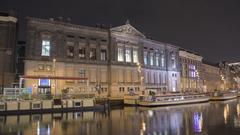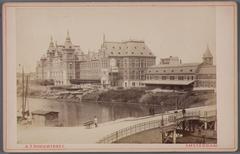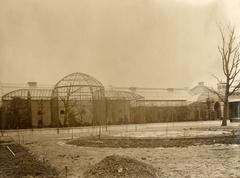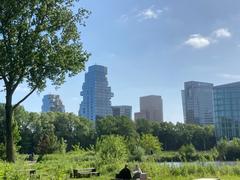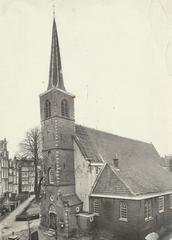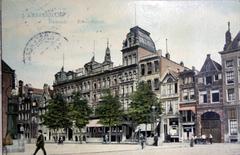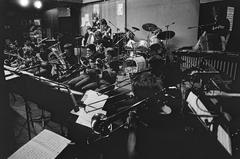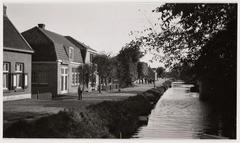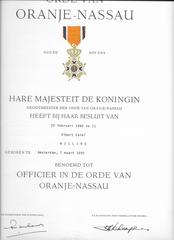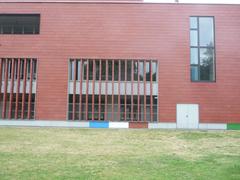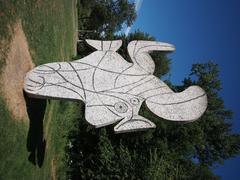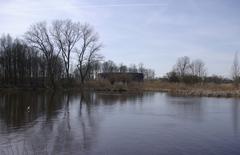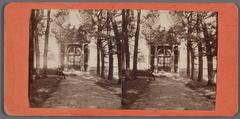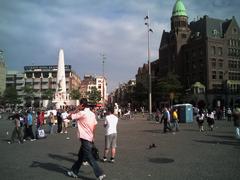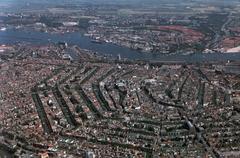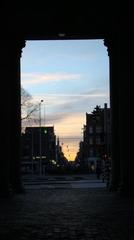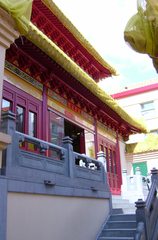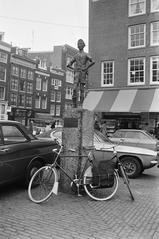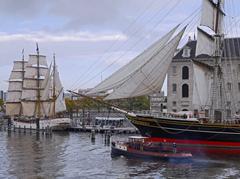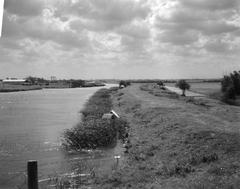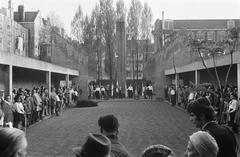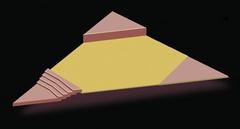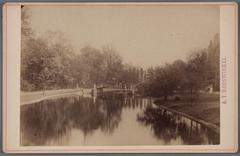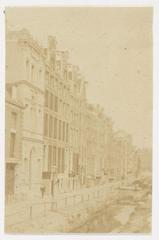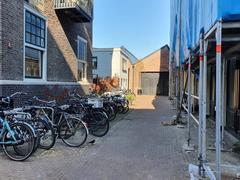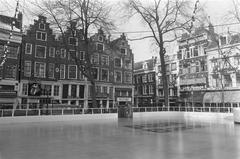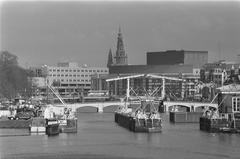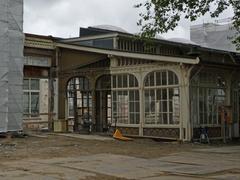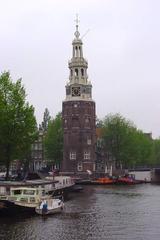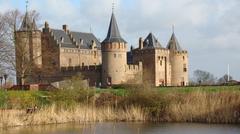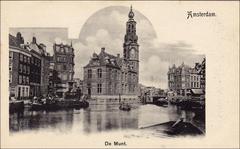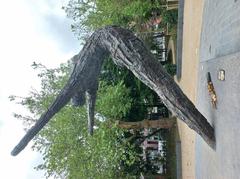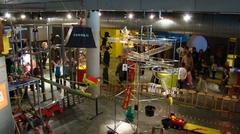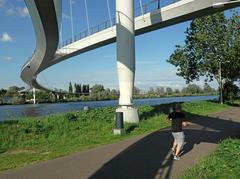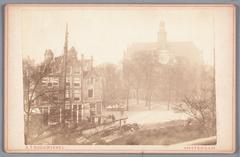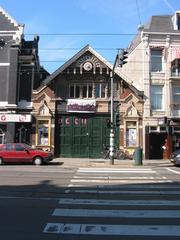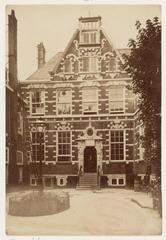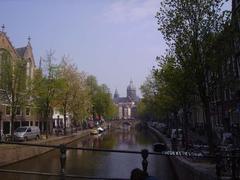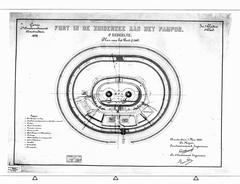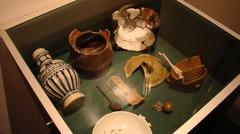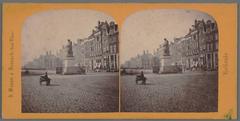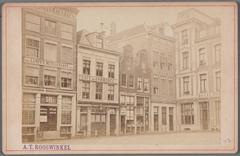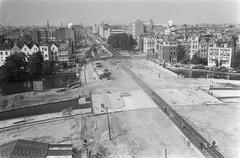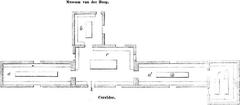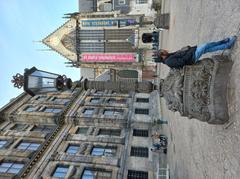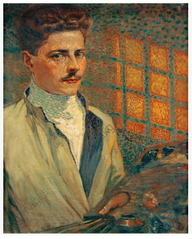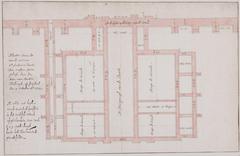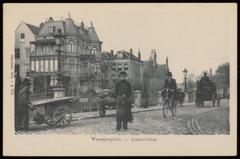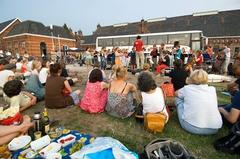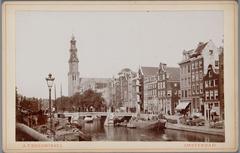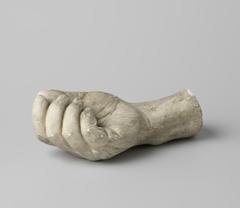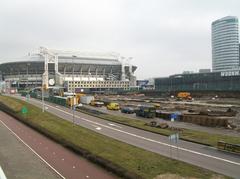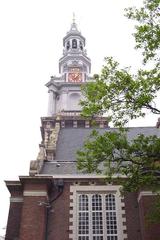Greenhouse in the Botanical Garden Amsterdam: Visiting Hours, Tickets, and Expert Tips
Date: 03/07/2025
Introduction
Located in the bustling heart of Amsterdam, the Hortus Botanicus Amsterdam is one of the world’s oldest and most distinguished botanical gardens. Established in 1638, it has evolved from a medicinal herb garden into a premier center for plant conservation, scientific research, and public education. The garden is celebrated not only for its rich botanical diversity but also for its striking architectural features, most notably the innovative Three Climate Greenhouse. This guide delivers everything a visitor needs to know, from historical context and architectural highlights to current visiting hours, ticketing, accessibility, travel tips, and practical advice to ensure a memorable experience (audiala.com).
Table of Contents
- History & Evolution of Hortus Botanicus Amsterdam
- Architectural Heritage: Three Climate Greenhouse
- Practical Visitor Information
- Heritage Status & Conservation
- Visitor Experience & Notable Features
- Nearby Attractions & Travel Tips
- Frequently Asked Questions (FAQ)
- Conclusion & Call to Action
- References
History & Evolution of Hortus Botanicus Amsterdam
Founded in 1638, the Hortus Botanicus was initially established to supply medicinal herbs to Amsterdam’s physicians during a period marked by frequent disease outbreaks. Over the centuries, it transformed into a leading institution for botanical research and conservation (audiala.com). During the Dutch Golden Age, the garden’s plant collection expanded rapidly, enriched by specimens brought by the Dutch East India Company from across the globe (amsterdamlocalgems.com). The garden survived threats of closure in the early 20th century and has been a protected historical site since 1912, continually modernizing its facilities and plant collections (audiala.com).
Architectural Heritage: Three Climate Greenhouse
Design & Construction
An architectural gem, the Three Climate Greenhouse (Drieklimatenkas), was designed by Zwarts & Jansma Architects (now ZJA) and opened in 1993. Its striking steel and glass structure houses three climate zones—subtropical, desert, and tropical—each meticulously controlled for temperature, humidity, and air quality (dehortus.nl; zja.nl; bonjouramsterdam.fr). Elevated walkways and transparent facades create a light-filled, immersive environment where visitors can experience the extraordinary diversity of global plant life.
Renovation & Sustainability
Currently undergoing a major sustainability-focused renovation (completion scheduled for June 2025), the greenhouse aims to become the Netherlands’ first climate-neutral public greenhouse (thedirt.news; zja.nl; metalocus.es; luxuriousmagazine.com). Key innovations include:
- Replacement of single-glass panels with double glazing and ETFE air cushions for superior insulation.
- Smart climate control systems with sensors for temperature, humidity, light, and irrigation.
- Rainwater harvesting and storage to minimize reliance on municipal water.
- Transition to gas-free heating, connecting to Hermitage Amsterdam’s heat and cold storage system.
Interior Layout & Visitor Experience
- Subtropical Zone: Features lush greenery, water features, and seating areas for relaxation.
- Desert Zone: Showcases a wide array of succulents and cacti, highlighting plant adaptations to arid climates.
- Tropical Zone: Simulates a dense rainforest with elevated humidity and temperature, complete with a canopy walk for overhead views.
Informational signage throughout enhances the educational value, while winding pathways, floating bridges, and interactive exhibits encourage exploration (bonjouramsterdam.fr; ICYEurope).
Practical Visitor Information
Location & Access
- Address: Plantage Middenlaan 2A, 1018 DD Amsterdam
- Public Transport: Tram lines 9 and 14 (Plantage Middenlaan stop); Metro lines 51, 53, and 54 (Waterlooplein stop). Parking is limited—public transport is advised (ICYEurope).
Visiting Hours & Tickets
- Open: Daily, 10:00–17:00. Extended hours (10:00–21:00) on Thursdays and Sundays in July and August (amsterdamtips.com).
- Admission: Adults €13.50; children (5–17), students, and youth pass holders €7.00; free for children under 5 and I Amsterdam City Card holders. Museumkaart is not valid (amsterdamtips.com).
- Three Climate Greenhouse: Closed for renovation until June 2025; all other garden areas remain accessible (dehortus.nl).
Accessibility
- Fully wheelchair accessible with wheelchairs available for rent.
- Guide dogs welcome (iamsterdam.com).
Guided Tours & Events
- Pre-bookable guided tours led by botanical experts provide deeper insight into the collection and architectural features (travelmustdos.com).
- Regularly scheduled workshops and seasonal events—check the official calendar for updates (dehortus.nl).
Facilities & Photography
- Orangery Café: Organic, locally sourced refreshments.
- Hortus Store: Botanical books, plants, and souvenirs.
- Photography: Personal use permitted; professional shoots require advance approval (amsterdamian.com).
Heritage Status & Conservation
Several buildings, including the Palm House (1911) and Orangery (1875), are national monuments, reflecting the garden’s architectural and historical significance (dehortus.nl). The Three Climate Greenhouse, while modern, is recognized for its contribution to the living heritage of the site. The current renovation exemplifies a commitment to integrating sustainable design with the preservation of cultural landmarks (zja.nl).
Visitor Experience & Notable Features
- Canopy Walk: Elevated paths for treetop views in the tropical zone (ICYEurope).
- Glass Room: Educational space for workshops and school groups.
- Waterfall: Restored as part of the renovation, enhancing biodiversity and visitor enjoyment (ABT).
- Rare Plants: Includes rare species such as the Wollemi Pine and Gympie plant.
Nearby Attractions & Travel Tips
Combine your visit with nearby cultural highlights: Artis Royal Zoo, Hermitage Amsterdam, Portuguese Synagogue, and the Jewish Historical Museum. The best months to visit are spring and early autumn for mild weather and fewer crowds. Early morning and late afternoon tend to be quieter (iamsterdam.com).
Frequently Asked Questions (FAQ)
Q: What are the opening hours?
A: Daily 10:00–17:00; extended hours on Thursdays and Sundays in July and August.
Q: How much is admission?
A: Adults €13.50; children (5–17), students, youth pass holders €7.00; free for children under 5 and I Amsterdam City Card holders.
Q: Is the Three Climate Greenhouse open?
A: Closed for renovation until June 2025.
Q: Is the garden accessible for wheelchairs?
A: Yes, with wheelchairs available for rent.
Q: Are pets allowed?
A: Only service animals.
Q: Can I take photos?
A: Personal photography is allowed; professional shoots require a permit.
Q: Are guided tours available?
A: Yes, bookable in advance.
Conclusion & Call to Action
Hortus Botanicus Amsterdam is a living testament to centuries of botanical exploration, architectural achievement, and sustainability leadership. Its diverse greenhouses, including the soon-to-be climate-neutral Three Climate Greenhouse, offer an unparalleled journey through the world’s ecosystems. With accessible facilities, enriching educational programs, and its prime location in the historic Plantage district, a visit to Hortus Botanicus is a highlight for anyone exploring Amsterdam.
Plan your visit today—book tickets online, explore the latest events, and enhance your experience with the Audiala app for interactive maps and exclusive audio guides. Follow Hortus Botanicus on social media for renovation updates and seasonal highlights. Discover the intersection of history, innovation, and nature at one of Amsterdam’s most cherished sites.
References
- This guide is informed by official and reputable sources including:
